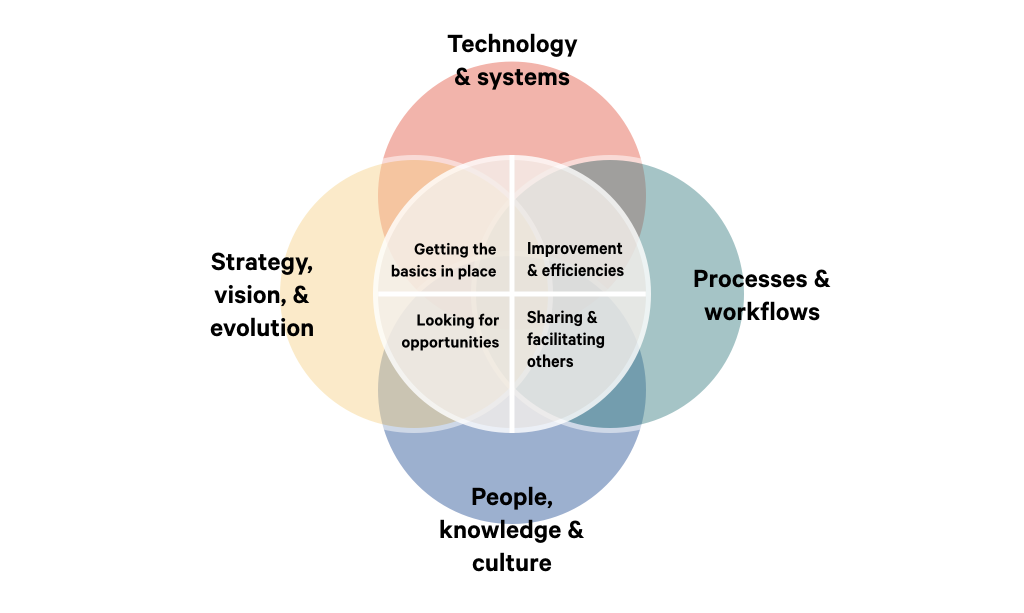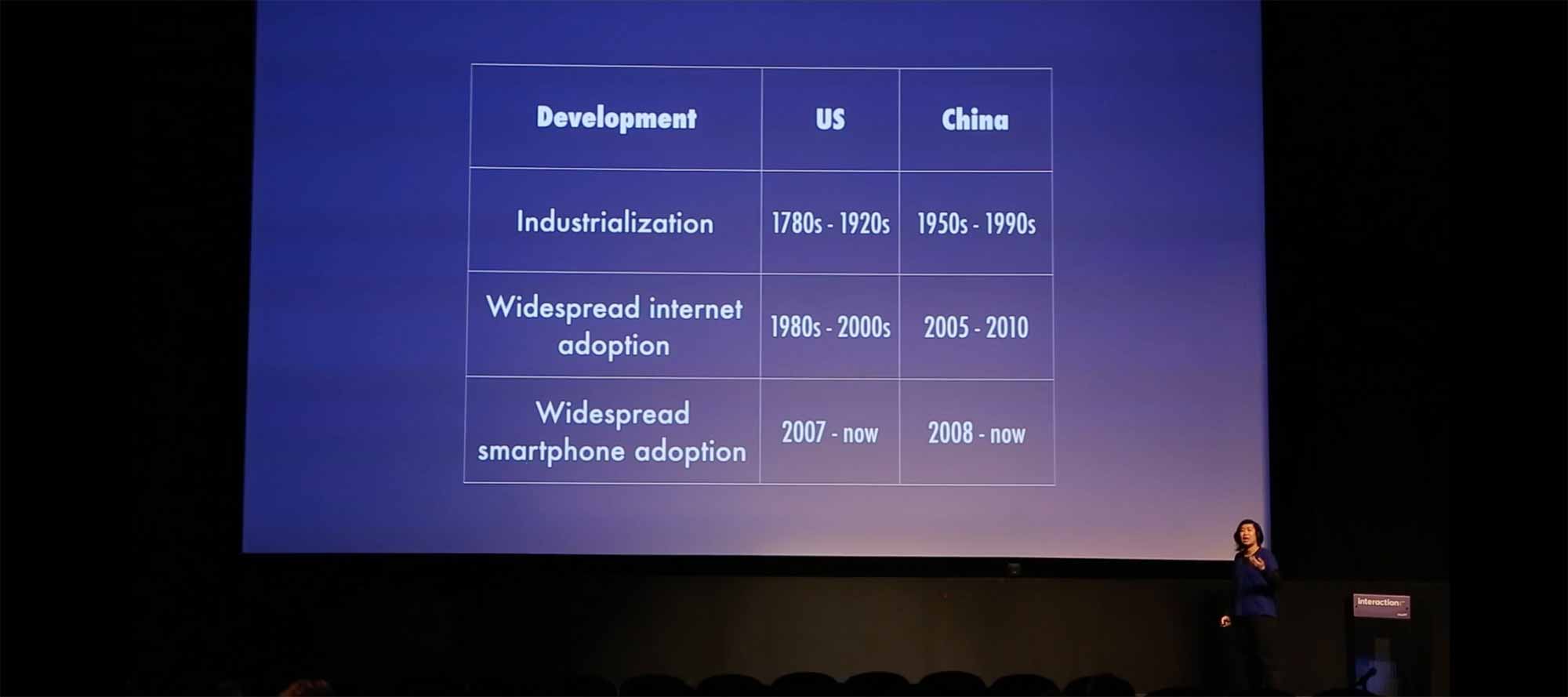Published on Thursday, 27 Jul, 2017
What digital transformation means for us
In this series of articles I’m going to be doing a deep dive into the subject of digital transformation, and what it means for us. The first article starts at the beginning - what is digital transformation?
Digital transformation is everywhere at the moment. It can be found in dedicated company teams, in government, at conferences, and even on this site — as a digital transformation consultancy it’s what we do.
The phrase itself is not a new term by any stretch, but like many buzzword-tactic labels it’s suffered slightly under that wonderful ambiguity that comes whenever we try to pin down something quite abstract. It’s one of those things that has given me personally a sense of purpose and identity, but at the same time I always slightly cringe at saying it.
Recently I’ve started coming across it a lot more in the wider digital and developer community; no longer just from notable names in the field that I’ve followed for years. It feels like wider awareness is growing, but not necessarily in the right way. Only yesterday I saw a tweet saying “the term ‘digital transformation’ … which means ‘automating simple business processes’”.
This is a common perception — that it’s just about turning traditional systems into digital systems, or taking manual tasks and automating them. Digital transformation is about about so much more than this, and I wanted to capture some thoughts on the subject in the hope that it’ll encourage others to think more broadly.
What is digital transformation?
So what is it? Everyone has their own definition, and those who aren’t talking in the context of automating business processes often reference it in relation to the latest tech trends (today that’s VR, AI, chat interfaces…), digital marketing, or customer experiences.
I like to think of it much more simply: to me, digital transformation is about using ever-changing digital tools, techniques, technologies and knowledge to help people do what they do, better.
Those people will be in completely different situations. They might be a business serving customers, they could be a community, they could be internal staff, or they could be designers and developers working for these other people. They could be enterprise-level organisations, or people in village halls working with pens and paper.
Solving problems vs seeing opportunities
Our earliest digital transformations are getting the basics in place at all — things like a website, online payment, or communication channels to our customers. Once we have those down, we often start to turn our gaze to improvements — process streamlining, updating systems to better meet needs, defining the standards and principles that we work to, or digitising more traditional areas. These areas are often driven by solving problems — filling gaps where we have needs, becoming more efficient, saving money, or creating revenue.
At the same time, we can also be thinking more broadly, and looking for opportunities. We can start to work better, or create improved services and products through insight from data we’re gathering and analysing digitally. We can facilitate innovation from others through making our data open for anyone to use, reuse or share. We can reinvent the focus and ethos of businesses themselves by learning from how others. We can also start to use experts to help us build up our own knowledge and skills in-house, and start to share this with others within our group. Focusing on culture, business strategy, learning, and teaching can all be incredibly powerful to help build sustainable communities of people who can leverage the opportunities that digital can bring far into the future.
The real key here is to not see these things in silos. Your technology transformation needs to consider your people and strategy or it will fail. Likewise, improving your culture could be aided by technology, or learning about cutting edge web capabilities may better inform both your strategy and technology implementation. It’s also important to consider these internally and externally — for instance embracing VR doesn’t need to mean introducing technology to make money from customers, but could also be a new tool to enable your staff to work in new ways.
I've been using VR to plan out talks; associating a space with a topic seems to work pretty well for me pic.twitter.com/yjZPsMvpu5
— Ben Foxall (@benjaminbenben) June 9, 2017
In short, transformation crosses from:
- technology and systems, to
- processes and workflows, to
- people, knowledge and culture, to
- strategy, vision, evolution
Regardless of your starting point or area of focus - whether you’re just starting out or beginning to look for new opportunities that digital can bring you - by considering your challenge through the four lenses above you’ll be more likely to make balanced change happen.

We call it digital transformation now, but the reality is that this kind of evolution has been happening throughout our history. Digital has been helping us to adapt for years, but I think that the recent rush for transformation has gone hand-in-hand with the web providing us incredible possibilities to aid the above, as well as us having learnt a huge range of skills that we’re now starting to share with each other.
Transformation isn’t uniform across the world
Here in the UK, transformation is usually talked about by large consultancies, for other large organisations. We take for granted and make the assumption that most have already gone through early digital transformation — but that’s not necessarily right.
Globally, there are huge amounts of businesses where people are learning to code, or using tools like Wix or Squarespace to take their offering online for the very first time. There are also people who are just getting online at all — as of March 31, 2017 only 49.7% of the world’s population uses the internet.
They’re all going through their own digital transformation, and all too often get forgotten by the pundits of the digital world in favour of transformation being only about switching from one massive software system to another, or introducing drones to deliver products. These are still transformations.
Just because someone’s only just got online, it also doesn’t mean that they won’t rapidly be doing the things that earlier starters are. In a recent talk, Christina Xu shares how different societal transformations have all happened incredibly rapidly in China compared to the US, and how this has led to different expectations. Christina Xu: Convenient Friction: Observations on Chinese UX in Practice on Vimeo

Every transformation comes from smaller steps
People often talk about a business going through a transformation. I don’t believe in this. The beauty of digital transformation, and part of why it’s hard for people to pin down, is because it’s ever-shifting. You can absolutely complete a transformation project, but digital is not going away and there will always be new ways of it providing things that can benefit us. For me, the fact that digital transformation has been around for so long and has taken many forms is absolutely testament to this.
Your eventual transformation may take numerous years to fully complete, but during this time there are numerous little transformations that you can run independently.
Just because you’re currently focusing on a massive transformation programme in the form of a systems upgrade doesn’t mean that you can’t start thinking about your culture, processes, or internal capabilities in parallel. Just because you went through a transformation programme a year ago doesn’t mean that you still don’t need to transform.
Just as digital projects are never really finished, neither is our relationship with the web and digital technologies.
What does digital transformation mean to you?
We’ve seen here how transformation can take many forms, and will mean different things to people in different situations. The most important starting point for any transformation is to ask yourself: what does digital transformation mean for me?
In the following articles I’m going to touch on how we transform, including starting points for your conversation, examples of things to think about, and activities that may be useful.
In the meantime, whether you’re a small village shop thinking about how you can better serve your customers, a global medical company wanting to use technology to do better work and serve society, or anyone in between, have a think about this:
- Where am I now?
- Why is this interesting to me?
- What are the questions that I need answering?
If you’d like to share the answers and start a conversation, we’d love to hear what you’ve come up with. Feel free to get in touch if you’d like to talk about this more.
Read more from the blog
Back in time:
Trying to write better job descriptions
Forward in time:
Designing for 10 years' time
Posted by Sally Lait
Sally is the lead consultant and founder of Records Sound the Same, helping people with digital transformation. She's also a speaker, coder, gamer, author, and jasmine tea fiend.
 Sally Lait
Sally Lait